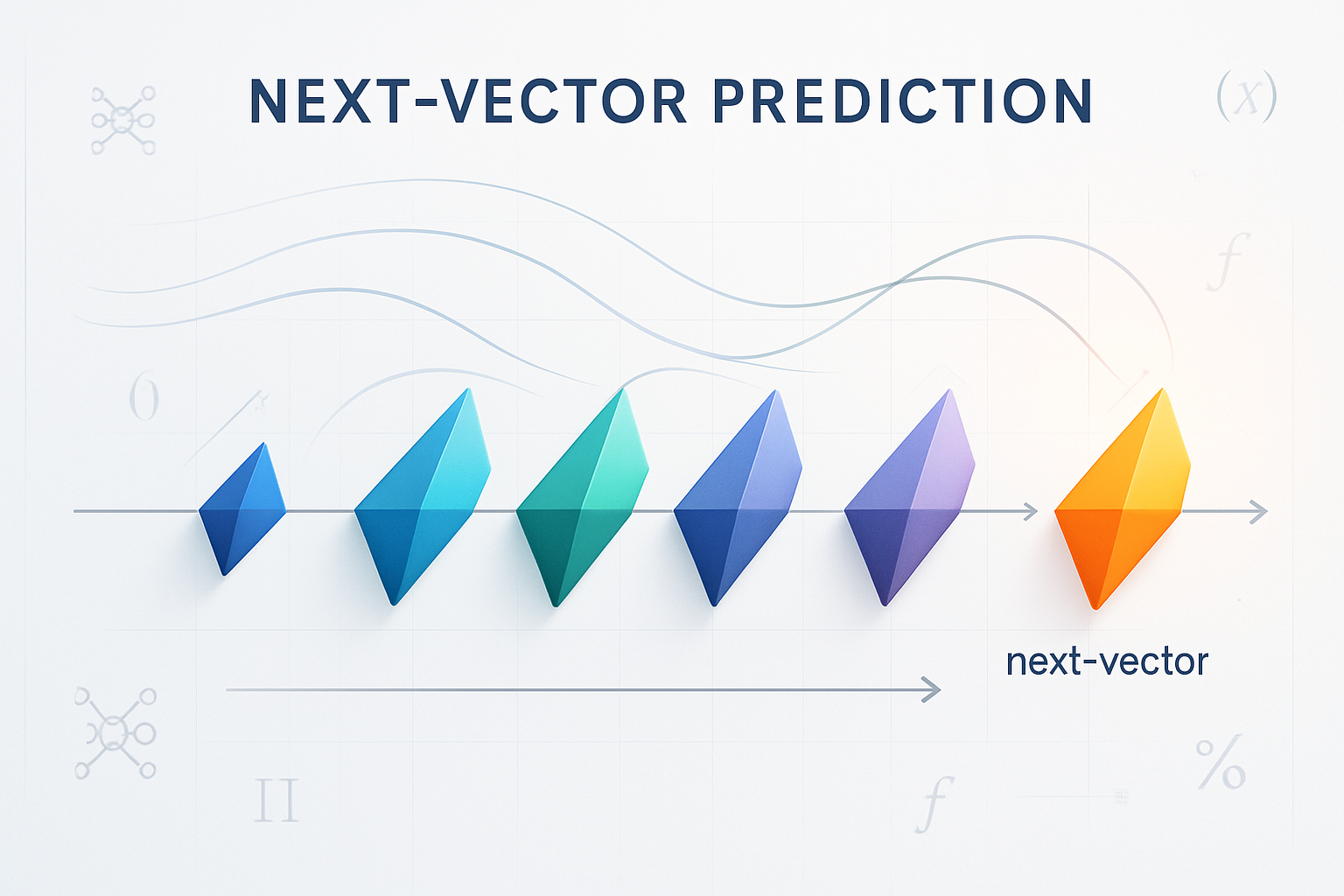TL;DR
Technical feasibility assessment is the critical first step that determines whether an AI project can be successfully built with your organization’s current resources, capabilities, and constraints. This comprehensive evaluation covers data readiness, talent assessment, infrastructure requirements, model selection, integration challenges, security considerations, and cost-benefit analysis.
Skipping this crucial phase leads to project failures, budget overruns, and wasted resources. A thorough feasibility study should examine all dimensions—from data quality and team expertise to computing infrastructure and regulatory compliance—before committing to full-scale AI development.

Introduction: What is Technical Feasibility in AI?
In the rapidly evolving landscape of artificial intelligence, organizations face an unprecedented challenge: distinguishing between what’s theoretically possible and what’s practically achievable within their specific constraints. Technical feasibility in AI projects represents the critical bridge between ambitious vision and executable reality.
Definition and Core Concept
Technical feasibility evaluates whether an AI project can be built with the company’s current resources and capabilities. It fundamentally asks: “Can we do this with our staff, tools, and data?” This assessment goes beyond mere possibility—it examines the practical constraints, resource requirements, and organizational readiness necessary for successful implementation.
According to RTS Labs’ comprehensive guide, this evaluation must assess current IT infrastructure and identify gaps or limitations in storage, processing power, and network bandwidth while determining scalability requirements based on expected data volume and performance needs.
The Critical Importance of Feasibility Assessment
The stakes couldn’t be higher. Skipping feasibility checks leads to catastrophic outcomes: wasted time, budget overruns, and complete project failure. Geniusee’s analysis reveals that many AI projects fail not due to poor ideas, but because teams proceed without clear technical understanding of achievability.
Projects launched without proper tools, skilled staff, or system compatibility often encounter insurmountable obstacles. As Andrew Ng emphasizes, ideas that aren’t technically achievable inevitably incur delays and cost overruns—transforming promising initiatives into organizational nightmares.
The Unique Complexity of Modern AI Projects
Contemporary AI projects, particularly those involving Generative AI, introduce unprecedented layers of complexity:
- Massive computational requirements for training and inference
- Enormous data needs spanning structured and unstructured formats
- Integration challenges with existing enterprise systems
- Specialized talent requirements in emerging technologies
- Regulatory and ethical considerations that didn’t exist in traditional software
Understanding these complexities upfront enables executives to make informed decisions about project viability, resource allocation, and strategic refinement.
Aligning with Business Goals and Use Cases
Establishing Clear Objectives and Success Metrics
Every AI project must begin with crystal-clear business alignment. Without this foundation, even technically perfect solutions become organizational failures. The feasibility assessment must tie AI initiatives directly to specific business outcomes—whether cost savings, enhanced customer engagement, or new revenue streams.
Success metrics should be established before technical assessment begins. These might include:
- Return on Investment (ROI) calculations with specific timeframes
- Key Performance Indicators (KPIs) that directly impact business operations
- Operational efficiency gains measured in time, cost, or quality improvements
- Customer satisfaction metrics for customer-facing AI applications
Strategic Use Case Prioritization
Not all AI applications are created equal. Focus on use cases that solve genuine problems and can be delivered incrementally. The most successful organizations prioritize “quick wins” with high impact rather than pursuing moonshot projects that may never materialize.
Effective prioritization considers:
- Problem severity and business impact
- Technical complexity and implementation timeline
- Resource requirements versus available capabilities
- Risk tolerance and organizational readiness for change

Securing Executive Buy-In and Stakeholder Engagement
Involve key stakeholders early in the process—business managers, product owners, and technical leaders must collaborate from the outset. This ensures the project addresses strategic priorities while securing necessary support for resource allocation.
Early stakeholder engagement prevents scope creep, manages expectations, and builds the organizational coalition necessary for successful implementation. Without this foundation, even technically feasible projects can fail due to lack of organizational support.
Data Requirements and Readiness
Comprehensive Data Inventory and Assessment
Data forms the lifeblood of any AI system. A thorough feasibility study must catalog all relevant data sources, both structured and unstructured, that the AI system will require. This inventory extends beyond simple availability—it must assess volume, format, accessibility, and quality characteristics.
For generative AI applications, this assessment becomes even more critical. These systems require not only labeled examples but also vast amounts of text, images, or documents for fine-tuning. The inventory must account for:
- Structured data from databases, CRMs, and enterprise systems
- Unstructured data including documents, images, audio, and video
- Real-time data streams for applications requiring immediate processing
- Historical data for training and validation purposes
Data Quality and Labeling Requirements
Machine learning models are only as good as their training data. Poor quality or insufficient data represents one of the most common causes of AI project failure. The assessment must evaluate data across multiple dimensions:
Quality Metrics
- Accuracy: How correct is the data?
- Completeness: Are there significant gaps or missing values?
- Consistency: Is data formatted uniformly across sources?
- Timeliness: Is the data current enough for the intended use case?
Labeling Considerations
For supervised learning applications, labeled data becomes crucial. Generative AI fine-tuning may require hundreds to thousands of curated examples. The feasibility study must assess:
- Current labeling status of available datasets
- Labeling requirements for the specific AI application
- Cost and time required for additional labeling
- Quality control processes for maintaining label accuracy
Addressing Data Gaps and Augmentation Strategies
Identifying missing data or biases early prevents project derailment. When critical data is unavailable, organizations must consider alternative approaches:
- Additional data collection through new processes or systems
- Synthetic data generation for training and testing
- Third-party data partnerships or vendor relationships
- Data augmentation techniques to expand existing datasets
Research from McKinsey indicates that 70% of companies struggle with data quality and sufficiency in AI projects—making this assessment absolutely critical for project success.

Governance and Compliance Framework
Data governance isn’t optional—it’s fundamental to AI project viability. Organizations must ensure they have legal rights to use data and that usage complies with privacy regulations including GDPR, HIPAA, and industry-specific requirements.
Generative AI projects often ingest sensitive text or personal data, making governance even more critical. Essential considerations include:
- Access controls and user authentication systems
- Audit trails for data usage and model training
- Privacy protection mechanisms and anonymization techniques
- Regulatory compliance documentation and processes
Talent and Team Composition
Core Skills Assessment and Requirements
AI projects demand specialized expertise that many organizations lack internally. A comprehensive feasibility study must honestly assess current team capabilities against project requirements. Essential roles typically include:
Technical Roles
- Data Scientists/Engineers: For model development and data pipeline creation
- ML Engineers: For model deployment and production systems
- DevOps Engineers: For infrastructure and continuous integration
- Software Developers: For application integration and user interfaces
Specialized Roles for Generative AI
- Prompt Engineers: For optimizing model interactions
- NLP Specialists: For natural language processing applications
- Domain Experts: For ensuring model outputs align with business requirements
Identifying and Addressing Skill Gaps
Skill gaps represent one of the most significant barriers to AI project success. Organizations must develop strategies for addressing missing capabilities:
Internal Development Options
- Training programs and professional development courses
- Workshops and bootcamps for existing team members
- Cross-functional collaboration to leverage existing domain expertise
External Support Strategies
- Hiring specialized talent in competitive markets
- Consulting partnerships for specific expertise areas
- Vendor relationships for managed AI services
- Academic partnerships for research and development support
Leadership and Collaboration Framework
Successful AI projects require clear ownership and cross-functional collaboration. Assign dedicated leadership—such as an AI product manager—to coordinate between technical and business teams. This role ensures:
- Project alignment with business objectives
- Resource coordination across departments
- Risk management and issue escalation
- Stakeholder communication and expectation management
Early collaboration between AI experts and domain specialists keeps projects grounded in practical business requirements while maintaining technical rigor.

Computing Infrastructure and Technology Stack
Hardware and Computational Requirements
AI workloads, particularly for Generative AI, demand substantial computational resources. The feasibility assessment must evaluate whether existing infrastructure can support:
Processing Requirements
- CPU/GPU/TPU resources for model training and inference
- Memory capacity for large model loading and processing
- Storage systems with high-speed access for large datasets
- Network bandwidth for data transfer and distributed processing
For example, fine-tuning a foundation model may require multiple GPUs with high-speed interconnects and substantial memory capacity. Organizations must assess whether current infrastructure meets these demands or requires significant upgrades.
Cloud vs. On-Premises Decision Framework
Infrastructure deployment strategy significantly impacts project feasibility and costs. Each approach offers distinct advantages and challenges:
Cloud Advantages
- On-demand scaling for variable workloads
- Managed AI services reducing operational complexity
- Lower upfront costs with pay-as-you-use models
- Access to latest hardware without capital investment
On-Premises Considerations
- Data sensitivity and security requirements
- Long-term cost control for predictable workloads
- Regulatory compliance in restricted environments
- Existing infrastructure investment and expertise
The assessment must evaluate existing IT constraints including network bandwidth, storage capacity, and operational capabilities to determine the optimal deployment strategy.
AI Tools and Framework Selection
Technology stack decisions impact both development efficiency and long-term maintainability. The feasibility study should inventory existing tools and evaluate their suitability:
Development Frameworks
- TensorFlow and PyTorch for deep learning development
- Hugging Face libraries for natural language processing
- MLOps platforms for model lifecycle management
- Data processing tools for pipeline development
Integration Considerations
- API compatibility with existing systems
- Licensing requirements for commercial vs. open-source tools
- Support and community resources for troubleshooting
- Scalability characteristics for production deployment
Data Infrastructure and Pipeline Architecture
Robust data infrastructure forms the foundation of successful AI systems. Organizations must plan for:
Data Storage and Management
- Data lakes and warehouses for structured and unstructured data
- Database systems optimized for AI workloads
- Backup and recovery systems for critical data
- Version control for datasets and model artifacts
Processing Pipelines
- ETL/ELT tools for data transformation and preparation
- Batch and stream processing capabilities
- Data quality monitoring and validation systems
- Automated pipeline orchestration for reliable operations

AI Model and Algorithm Considerations
Model Selection Strategy: Build vs. Adapt
The choice between custom development and pre-trained models fundamentally impacts project feasibility. Modern AI development increasingly leverages foundation models that can be fine-tuned for specific applications.
Pre-trained Model Advantages
- Reduced development time and resource requirements
- Proven performance on similar tasks
- Lower data requirements for fine-tuning vs. training from scratch
- Community support and documentation
Custom Development Scenarios
- Highly specialized domains without suitable pre-trained options
- Proprietary data that provides competitive advantage
- Specific performance requirements not met by existing models
- Regulatory constraints requiring full control over model behavior
Complexity and Risk Assessment
Evaluate whether the AI problem represents solved territory or requires research-level innovation. Problems with known solutions or similar public examples (such as those found on Kaggle or in open-source repositories) present higher feasibility than novel research challenges.
Risk factors to consider:
- Problem novelty and availability of similar solutions
- Technical complexity relative to team expertise
- Data requirements and availability
- Performance expectations and success criteria
Generative AI Specific Considerations
Generative models introduce unique challenges and requirements that must be carefully evaluated:
Data Requirements
- Large labeled datasets often requiring thousands of examples
- High-quality training data for consistent output generation
- Diverse examples to prevent model bias and improve generalization
Output Quality Management
- Hallucination detection and mitigation strategies
- Content validation and quality control processes
- Human review loops for critical applications
- Bias monitoring and fairness assessment
Scalability Challenges
- Computational intensity of large model inference
- Response time optimization for user-facing applications
- Caching strategies for frequently requested content
- Model updating and retraining procedures
Integration and Deployment Considerations
API and System Integration Architecture
Seamless integration with existing systems determines whether AI solutions provide practical business value. The feasibility assessment must map out complete data flows:
Integration Points
- Input data sources: CRMs, ERPs, databases, and external APIs
- Output destinations: Business applications, dashboards, and reporting systems
- Authentication systems: User management and access control
- Middleware requirements: Data transformation and routing
Technical Requirements
- API design and documentation standards
- Data format compatibility and transformation needs
- Error handling and recovery mechanisms
- Performance optimization for real-time applications
MLOps and Continuous Deployment
Production AI systems require sophisticated operational processes that many organizations underestimate. Essential MLOps capabilities include:
Development Operations
- Version control for code, data, and model artifacts
- Automated testing for model performance and integration
- Continuous integration/deployment pipelines
- Environment management for development, staging, and production
Monitoring and Maintenance
- Model performance monitoring for accuracy drift detection
- Data quality monitoring for input validation
- Usage analytics and performance metrics
- Automated alerting for system issues
Performance and Scalability Requirements
Clarify response time and throughput expectations early to ensure infrastructure can meet service level agreements. Generative AI applications can be particularly resource-intensive, requiring:
Performance Optimization
- Prompt batching for efficient processing
- Response caching for frequently requested content
- Load balancing across multiple inference servers
- Auto-scaling based on demand patterns
Scalability Planning
- Horizontal scaling strategies for increased load
- Resource allocation and capacity planning
- Cost optimization for variable workloads
- Geographic distribution for global applications
Security Architecture and Implementation
Secure deployment protects both the AI system and organizational data. Security considerations include:
Infrastructure Security
- Endpoint protection for model APIs
- Data encryption in transit and at rest
- Network security and access controls
- Authentication and authorization systems
AI-Specific Security Risks
- Prompt injection attacks on generative models
- Data leakage through model outputs
- Model theft and intellectual property protection
- Adversarial attacks and input validation
Security, Ethics, and Compliance
Bias Detection and Fairness Assessment
AI systems can perpetuate or amplify existing biases present in training data or algorithmic design. A comprehensive feasibility study must evaluate potential bias sources and mitigation strategies:
Bias Assessment Framework
- Training data analysis for demographic representation
- Algorithmic bias testing across different user groups
- Output monitoring for discriminatory patterns
- Fairness metrics and evaluation criteria
Mitigation Strategies
- Diverse training data collection and curation
- Bias detection tools and automated monitoring
- Regular auditing of model outputs and decisions
- Inclusive design processes involving diverse stakeholders
Privacy Protection and Data Rights
Privacy compliance isn’t optional—it’s fundamental to legal operation. Organizations must ensure comprehensive compliance with evolving privacy regulations:
Regulatory Compliance
- GDPR requirements for European data subjects
- CCPA compliance for California residents
- Industry-specific regulations (HIPAA, FINRA, etc.)
- Cross-border data transfer restrictions and requirements
Technical Implementation
- Data anonymization and pseudonymization techniques
- Consent management systems and user controls
- Data retention policies and automated deletion
- Audit trails for compliance demonstration
Regulatory Landscape and Governance Framework
The regulatory environment for AI continues evolving rapidly. Organizations must establish governance frameworks that can adapt to changing requirements:
Current Regulatory Considerations
- EU AI Act classification and compliance requirements
- Industry-specific regulations affecting AI deployment
- Intellectual property considerations for AI-generated content
- Liability frameworks for AI decision-making
Governance Implementation
- Ethics committees for AI project oversight
- Compliance tracking systems and documentation
- Risk assessment procedures and mitigation plans
- Incident response protocols for AI-related issues
Security Risk Management
AI systems face unique security vulnerabilities that traditional cybersecurity approaches may not address:
Data Security Measures
- Training data protection and access controls
- Model artifact security and version control
- Secure development practices and code review
- Third-party dependency management and monitoring
AI-Specific Threats
- Adversarial attacks designed to manipulate model behavior
- Data poisoning attempts to corrupt training datasets
- Model extraction attacks to steal intellectual property
- Prompt injection vulnerabilities in generative systems
Proof-of-Concept and Iterative Validation
Pilot Project Strategy and Implementation
Before committing to full-scale development, organizations should validate feasibility through focused pilot projects. These proof-of-concept initiatives provide crucial learning opportunities while minimizing risk exposure.
Pilot Design Principles
- Limited scope focusing on core functionality
- Representative data reflecting production conditions
- Clear success criteria and evaluation metrics
- Stakeholder involvement for feedback and validation
Implementation Approach
- Rapid prototyping to test key assumptions
- Iterative development based on user feedback
- Technical validation of integration and performance
- Business impact assessment against defined objectives
Agile Development and Continuous Learning
AI projects benefit from agile methodologies that embrace uncertainty and enable rapid adaptation. This approach helps discover hidden technical issues with manageable risk exposure:
Iterative Development Benefits
- Early problem identification before major resource commitment
- Stakeholder feedback integration throughout development
- Technical risk mitigation through incremental validation
- Scope refinement based on practical constraints
Learning Integration
- Regular retrospectives to capture lessons learned
- Technical debt management to maintain system quality
- Knowledge sharing across team members and stakeholders
- Best practice documentation for future projects
Success Metrics and Evaluation Framework
Define clear evaluation criteria that encompass both technical performance and business impact:
Technical Metrics
- Model accuracy and performance benchmarks
- System throughput and response time measurements
- Integration success and compatibility validation
- Scalability testing under various load conditions
Business Impact Metrics
- Cost savings from process automation or efficiency gains
- Revenue impact from new capabilities or improved customer experience
- Time savings in critical business processes
- User satisfaction and adoption rates
Cost, Resources, and Go/No-Go Decision
Comprehensive Resource Estimation
Accurate cost estimation requires detailed analysis of all project components, from initial development through ongoing operations:
Development Costs
- Personnel expenses for specialized AI talent
- Infrastructure costs including compute, storage, and networking
- Software licensing for development tools and frameworks
- Data acquisition and labeling expenses
Operational Costs
- Cloud services or infrastructure maintenance
- Model retraining and continuous improvement
- Support and monitoring systems
- Compliance and security ongoing requirements
Return on Investment Analysis
Compare estimated costs against expected benefits to determine project viability. Benefits may include:
Quantifiable Benefits
- Labor cost savings from process automation
- Efficiency improvements reducing operational expenses
- Revenue generation from new AI-enabled products or services
- Risk reduction through improved decision-making
Strategic Benefits
- Competitive advantage from AI capabilities
- Market positioning as an innovative organization
- Learning and capability building for future projects
- Customer satisfaction improvements
Build vs. Buy vs. Partner Decision Matrix
Evaluate alternative approaches to minimize technical risk and accelerate time-to-market:
Build In-House
- Advantages: Full control, customization, intellectual property retention
- Requirements: Sufficient AI expertise, development capacity, long-term commitment
- Best for: Unique requirements, competitive differentiation, long-term strategic importance
Purchase Solutions
- Advantages: Faster deployment, proven functionality, vendor support
- Considerations: Limited customization, ongoing licensing costs, vendor dependency
- Best for: Standard use cases, rapid deployment needs, limited internal expertise
Partnership Approach
- Advantages: Shared risk, access to specialized expertise, faster learning
- Considerations: Coordination complexity, intellectual property sharing, cultural alignment
- Best for: Complex projects, skill gap bridging, market validation
Critical Success Factors and Red Flags
Identify potential showstoppers that may require project scope refinement or postponement:
Red Flags
- Insufficient or poor-quality data for model training
- Unproven or immature technology for critical requirements
- Lack of essential technical expertise without viable acquisition path
- Prohibitive costs relative to expected benefits
- Regulatory or compliance barriers without clear resolution path
Success Enablers
- Strong executive sponsorship and organizational commitment
- Clear business case with measurable benefits
- Adequate resources and realistic timelines
- Technical feasibility validated through proof-of-concept
- Risk mitigation strategies for identified challenges
Conclusion and Next Steps
Comprehensive Assessment Framework
Technical feasibility assessment is inherently multidimensional, requiring systematic evaluation across data readiness, talent capabilities, infrastructure requirements, model selection, integration challenges, security considerations, and business alignment. Organizations that approach this assessment comprehensively position themselves for AI project success.
The framework outlined in this guide provides a structured approach to evaluating AI project viability while identifying potential risks and mitigation strategies. By addressing each dimension thoroughly, organizations can make informed decisions about project scope, resource allocation, and implementation strategy.
Documentation and Decision Support
Produce comprehensive feasibility documentation that guides executive decision-making. This should include:
Executive Summary
- Project overview and business objectives
- Feasibility assessment results and key findings
- Risk analysis and mitigation strategies
- Resource requirements and cost estimates
- Recommendation with supporting rationale
Technical Documentation
- Architecture diagrams and system design
- Data requirements and availability assessment
- Infrastructure specifications and deployment strategy
- Integration plans and timeline estimates
- Security and compliance framework
Continuous Review and Adaptation
Feasibility assessment is not a one-time exercise but an ongoing process that must evolve with changing technology, business needs, and organizational capabilities. Successful organizations establish regular review cycles that:
Monitor External Changes
- Technology advancement and new solution availability
- Regulatory evolution and compliance requirements
- Market conditions and competitive landscape
- Vendor capabilities and partnership opportunities
Track Internal Development
- Organizational capability growth and skill development
- Infrastructure evolution and capacity expansion
- Business priority shifts and strategic alignment
- Lessons learned from completed projects and pilots
Strategic Implementation Approach
Start with focused pilots and learn iteratively to maximize success probability in larger deployments. This approach enables organizations to:
- Validate assumptions through practical experience
- Build internal capabilities progressively
- Demonstrate value to stakeholders and secure ongoing support
- Refine processes and methodologies based on real-world feedback
The path to AI success begins with honest, comprehensive feasibility assessment. Organizations that invest in this critical foundation position themselves to harness AI’s transformative potential while avoiding the pitfalls that derail less prepared initiatives.
By following the framework outlined in this guide, organizations can navigate the complex landscape of AI project planning with confidence, making informed decisions that align technical possibilities with business realities and organizational capabilities.










